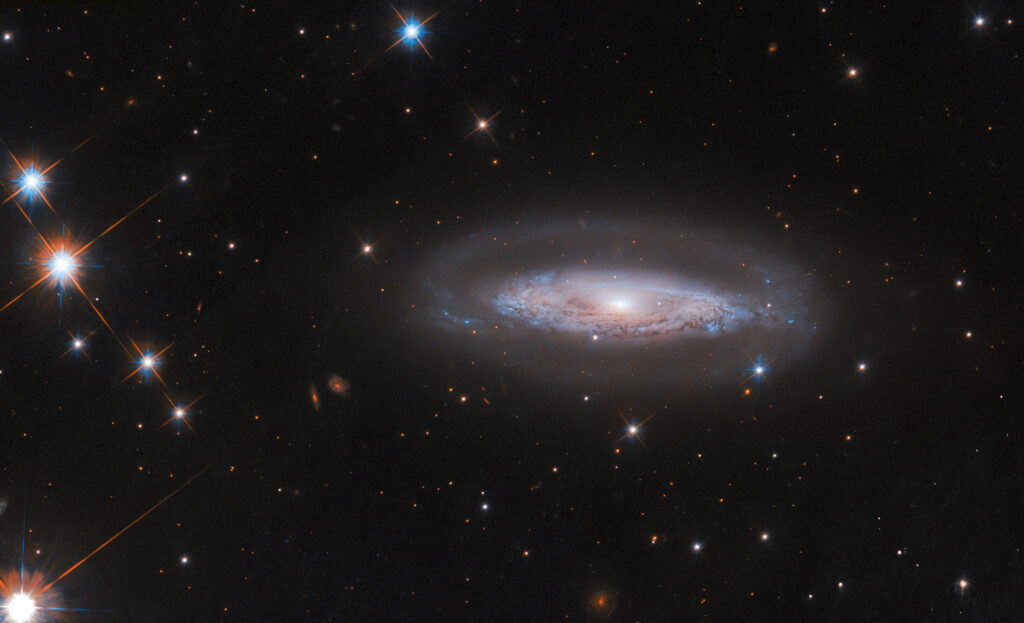Astronomers working with the Hubble telescope have published a new image. It shows both stars relatively close to Earth and the distant galaxy IC 4709.

Many Hubble telescope images are dotted with a large number of background objects. Some are stars in our Milky Way, others are distant galaxies. But how can they be distinguished from each other? It’s actually quite simple. The stars in the foreground are point light sources. Therefore, in the Hubble images they are surrounded by characteristic diffraction rays (this optical effect arises due to the peculiarities of the design of the reflector telescopes). Galaxies, however, look like just luminous dots with no rays around them.
In the case of the new Hubble image, its left side is dominated by a group of six bright Milky Way stars. In the center is the galaxy IC 4709. It is located at a distance of 240 million light years from Earth towards the constellation Telescopium.
Like our Milky Way, IC 4709 is a spiral galaxy. The Hubble image offers a detailed look at its disk, spiral arms dotted with star clusters, dark dust bands, and a faint halo. However, the most amazing sight is the bright compact region in the center: this is the active galactic nucleus.
If the core of IC 4709 were simply filled with stars, it would not be so bright. Instead, it contains a giant black hole that has 65 million times the mass of the sun. For comparison, the black hole at the center of the Milky Way is “only” 4 million times more massive than the Sun.
The black hole in IC 4709 is surrounded by an accretion disk which matter it actively absorbs. Its matter collides and heats up, which is accompanied by the release of huge amounts of electromagnetic radiation, from infrared to X-rays. Astronomers can calculate active black holes because of it.
Earlier we told you about another galaxy with a growing black hole that Hubble managed to photograph.
According to Esahubble


